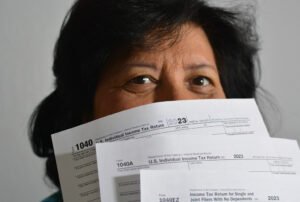
The pandemic has caused its share of economic collateral damage, and the recently released results of a survey adds another concern to an already long list: Many Americans are getting through the financial challenges they face in our struggling economy by eating into their retirement savings. It’s a practice that, if it continues, may stave off evictions and food insecurity today but presents an uncertain future for those who hope one day to retire. Many may end up delaying retirement for years.
Last November, Kiplinger and wealth management firm Personal Capital polled 744 people aged 40 to 74 still in the workforce to learn how they perceived their future financial security. More than half of the respondents (58 percent) said they withdrew or borrowed against funds from their retirement savings to meet current expenses. For a majority (56 percent), the amount withdrawn was between $50,000 and $100,000.
Where did the money go? Sixty-three percent report using withdrawn or borrowed retirement funds for day-to-day living expenses, while 21 percent used the money to support other members of their family. Forty-one percent report using funds drawn down to meet medical bills, while about one-quarter paid off home and auto repairs.
Of course, the survey covers only those fortunate enough to have retirement savings. Every person surveyed had at least $50,000 in retirement savings, with the median $188,800. Data compiled by the Economic Policy Institute in 2019, as cited by Grace Kay of Business Insider, illustrate the relative privilege of those surveyed by Kiplinger. As Kay explains, “Nearly half of Americans between the ages of 32 and 61 do not have any retirement savings and most of those that do have savings under $21,000.”
Sign up for our free newsletters
Subscribe to NPQ's newsletters to have our top stories delivered directly to your inbox.
By signing up, you agree to our privacy policy and terms of use, and to receive messages from NPQ and our partners.
The gap between retirement savings and the amount of money one needs in order to retire has been growing for some time. The Street reported last year that financial advisors recommend that a person at age 65 have $1 million set aside for retirement. Even if that is an overestimate, only a small percentage have near that level of savings. Between 55 and 64 years of age, the median amount of retirement savings in 2019 was $120,000. Drawing down retirement savings evidently only makes the gap worse.
With many having drained their retirement savings, more than half of the survey respondents report that they are now less confident about the financial plans they had in place for their retirement. Significantly, 35 percent of them now plan to work longer than they had before the pandemic. To the extent that people put off retirement, that could make entry of new workers into the labor force more difficult; as of December 2020, the federal Bureau of Labor Statistics reports that unemployment for 18- and 19-year-olds in the US was 17 percent—surely an underestimate and more than twice the overall official unemployment rate of 6.7 percent.
As noted, retirement has already become increasingly difficult for many. The average Social Security payment provides less than $18,000 annually. Employment-related retirement plans cover fewer and fewer retirees, a trend made worse as the gig economy grows. Now the COVID-19 economy adds to this gap.
The Kiplinger data provides yet another indicator of the need for public officials to face the nation’s economic shortfalls squarely. A society wishing to preserve retirement for future senior citizens must take action commensurate with the scale of the challenges.—Martin Levine













